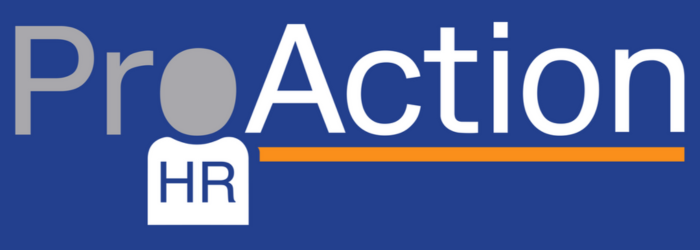Employee wellness - more than a pandemic driven tick box exercise!
Long gone is the thinking that the business workday starts at 9am, ends at 5pm, and you leave your problems at the door before you turn your computer on. Every one of us knows all too well over the last couple of years how difficult it is to concentrate or “be our best” when we are just putting on a brave face and battling through.
Wellbeing at work has been one of the buzz words of the past 18+ months, and rightly so. We are all aware of the impact the global pandemic has had and continues to have on mental health. The changes to the working environment of many, caused by COVID, have been a huge contribution to that.
The drive for better employee wellbeing has been pushed by the Government over the past 10+ years, encouraging companies to sign up, and shift their health & safety initiatives to encompass the psychosocial aspects of working life. What was a nice to have, has become an absolute must have as employees and employers alike have been forced to re-evaluate almost all aspects of what ‘work’ now looks like. There is not an organisation anywhere, no matter their position on the scale before, who hasn’t had to review their wellness provision. Some organisations have embraced this whole heartedly, and some, sadly have provided token gestures.
The mental health of all staff (and we say ALL, as even the toughest CEO will have some anxieties) applies 24 hours a day and is simply not paused during working hours. Likewise, things that happen during work hours continue to play on our minds long after we’ve left the office.
Yes, we’re all now very familiar with the rhetoric about how important it is to support our staff with their mental and physical health, about how your employees will be more engaged with the business and ‘go the extra mile’ for you, if you show you care about them.
For a long time now, forward thinking businesses have been signing up to discount gym membership deals and third-party employee assistance programmes. They know the true cost of not supporting their people isn’t just about the impact on their employee satisfaction and engagement survey scores. You don’t have to go as far as companies like Asana offering nap rooms or Google offering free massage therapy, but you really can’t ignore the facts and if you don’t think hard about what you can afford to put into your budget for employee wellness, there will be a cost to your business in other ways. The cold, hard financial statistics we usually see when reviewing the cost of poor employee wellness are based on the impact of absence, presenteeism and attrition to a business.
Absence
The Chartered Institute of Personnel and Development (CIPD) estimates that absence costs an organisation about £600 for each employee every year, however this is based on only the direct cost of covering the absence itself. The indirect costs of absence are far more difficult to put a price on – things like additional management time required to resolve issues caused by the absence, delays in projects where it’s not possible to cover the specific skills or knowledge missing, or potentially lost business and upset customers not getting as good a service from the temporary cover arranged.
Presenteeism
More difficult to prove on a business score card, but if your staff are attending work when they don’t feel well or have distractions caused by their personal lives, they won’t be productive and therefore are as good as absent and possibly worse. When we are in pain, exhausted or don’t have our minds fully on the job at hand, it’s far easier to make errors or lose our temper with colleagues and customers.
Attrition (Staff Turnover)
How many employees have left your organisation because of underlying health and wellbeing issues? Most academic researchers estimate around 50% of annual recruitment costs can be attributed to replacing staff who left or were dismissed because of known and unknown illness or mental health concerns. The Mental Health Charity, Mind.org, found in a national survey that 14% of employees said they had resigned and 42% had considered resigning due to workplace stress. Poor mental health leads to poor performance which leads to attrition – one way or another.
Supporting employee wellness creates an engaged and happy workforce
An engaged and happy workforce builds a great working atmosphere where everyone can be who they are, have fun, and do their best work. Workplaces with high employee engagement seriously outperform those with lower scores.
Engaged workplaces see higher profitability, productivity, and customer ratings, not to mention lower staff turnover and absence figures. There are many statistics, academic and real-world case studies which prove this, but instinctively, deep down, we all know this already, don’t we?
Really, it’s a no brainer and, much in the same way you’ve put money aside in your budgets to pay for IT security or business premises insurance, shouldn’t you think about protecting the health and wellbeing of your company’s greatest assets, your people, in the same way?
How do you implement employee wellness for the long term?
For any initiative or real change to become accepted within an organisation, the culture must be at the heart of its implementation. As Peter Drucker famously said, “Culture eats Strategy for breakfast”. There is little point in saying that staff are your most prized asset if:
It is not recognised when they are being pushed too hard.
Management fails to consider the impact on staff when they set and drive the next business target.
A line manager gives no time to listening (actively listening) and showing compassion to an individual’s concerns.
Your wellbeing initiatives aren’t seen as things which genuinely meet the needs of your team/s.
At ProAction HR our approach to employee wellness is centred around the 3 C’s: Culture, Compassion and Collaboration. All three areas need to be addressed and embodied to provide a meaningful approach. Without this approach, any Wellbeing Strategy is purely a tick box exercise, and a cost to the organisation without any real return.


